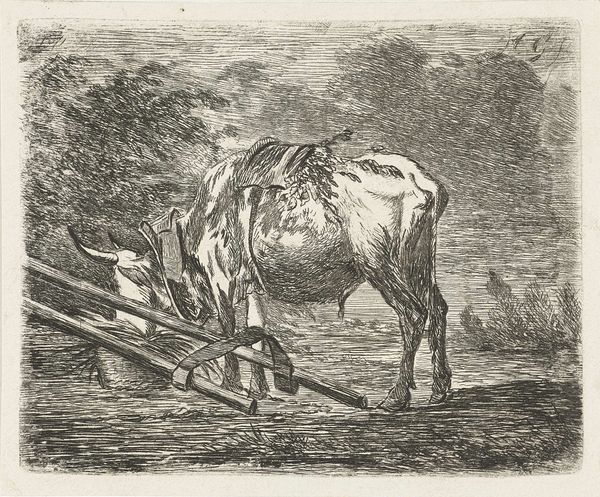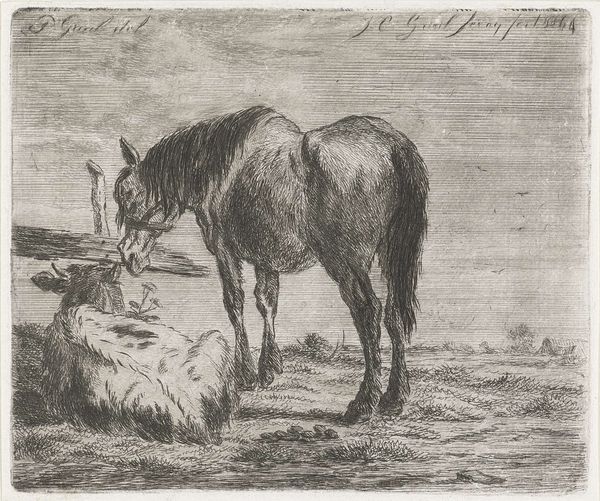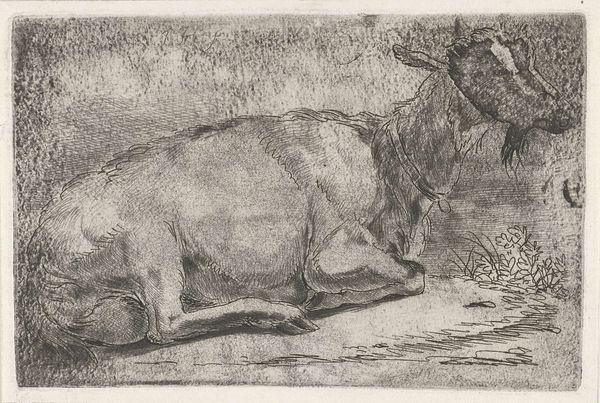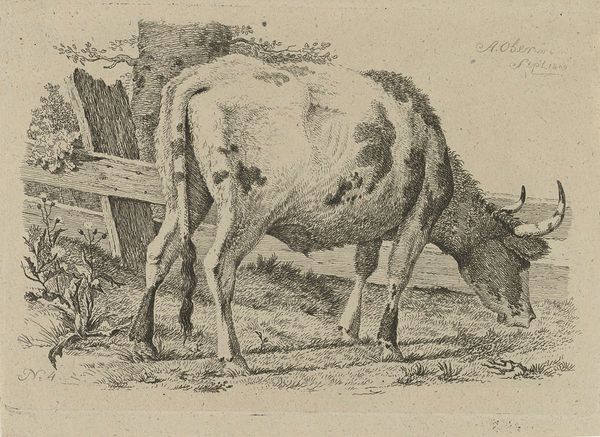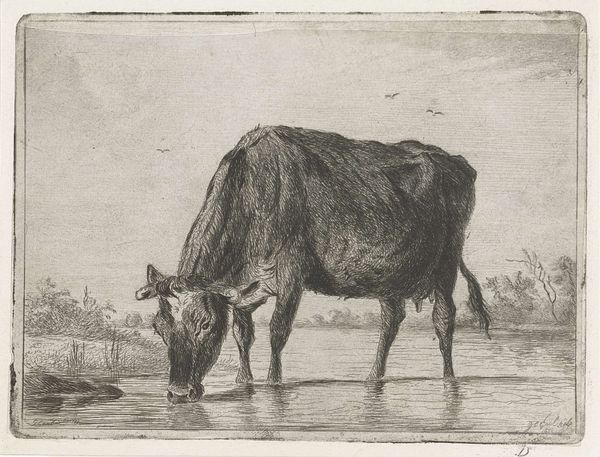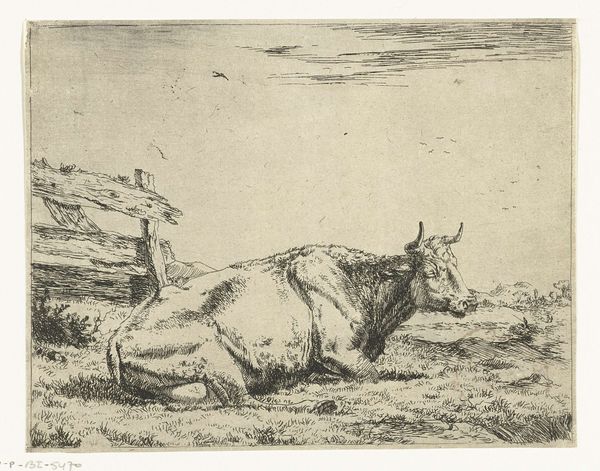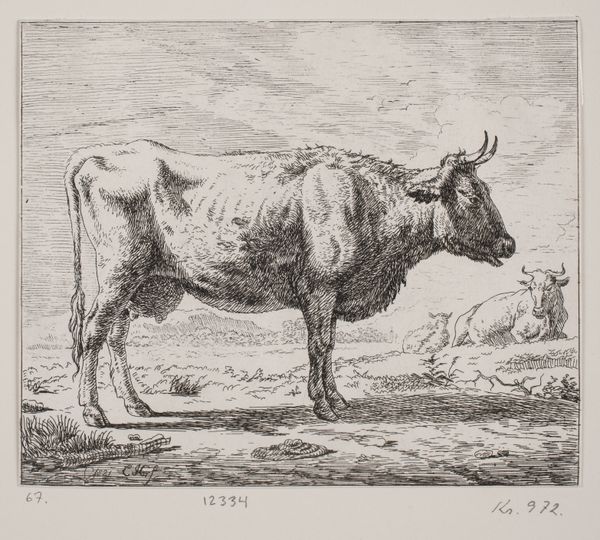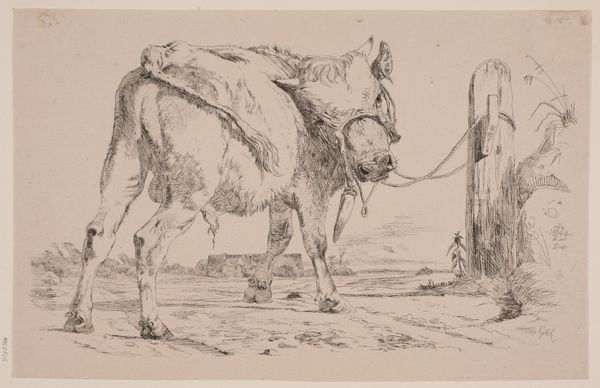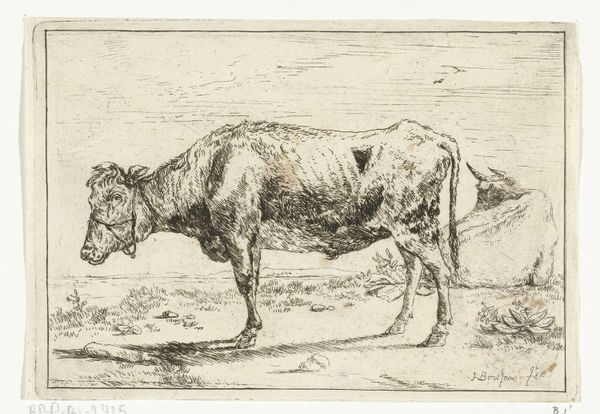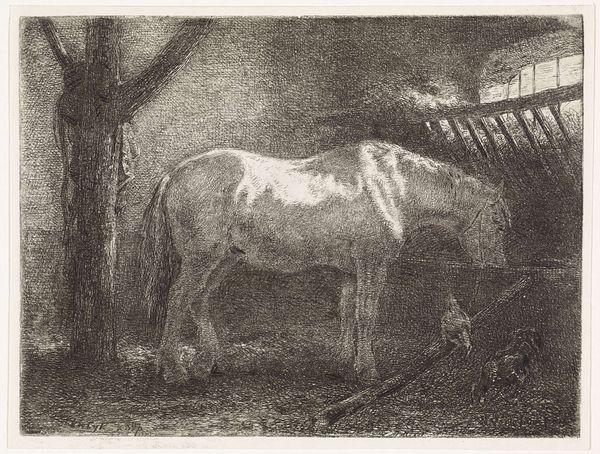
etching
#
etching
#
landscape
#
genre-painting
#
realism
Dimensions: height 93 mm, width 120 mm
Copyright: Rijks Museum: Open Domain
Curator: Jacobus Cornelis Gaal's etching from 1860, "Trekos met juk," meaning "Oxen with Yoke," presents a quiet scene. What's your first take? Editor: Melancholy. The muted tones and drooping posture of the ox evoke a sense of weariness, almost resignation. It's not grand, but it does pull at something deep. Curator: Indeed. The composition itself is carefully balanced. Note the diagonal thrust of the yoke, bisecting the frame, against the more rounded form of the animal. This contrast contributes to the piece’s dynamism. It's far more than a simple rural scene; it’s a play with geometric forms. Editor: The yoke itself is quite evocative. Beyond its literal function, the yoke is a time-honored symbol of burden and servitude, a fitting allegory of agricultural labor. Curator: Certainly, and Gaal masterfully employs hatching and cross-hatching to build depth and texture. Notice how the varying density of lines sculpts the animal's form, adding a tangible quality. Editor: Observe how Gaal’s realistic style isn't just an aesthetic choice. It also reflects the prevailing interest in the everyday life of common people in the Realist art movement of the mid-19th century. It seems a deliberate celebration of labor but the melancholy aspect lingers too much to become just celebration. Curator: Very perceptive. Consider how the absence of overt sentimentality, while realistic, arguably enhances its emotional potency. It lets us interpret the piece without manipulation. The artist refrains from sentimentalizing his subjects. Editor: A simple, potent representation. Curator: Precisely, by reducing the scene to a central animal and a strong geometrical element, Jacobus Cornelis Gaal directs us toward broader implications about labor and structure. Editor: Yes, and it makes this scene more evocative when the simple rural setting brings a meditation on duty and endurance. Curator: It leaves us much to ponder, as great art should. Editor: An image that belies its own profundity with deceptive ease.
Comments
No comments
Be the first to comment and join the conversation on the ultimate creative platform.
